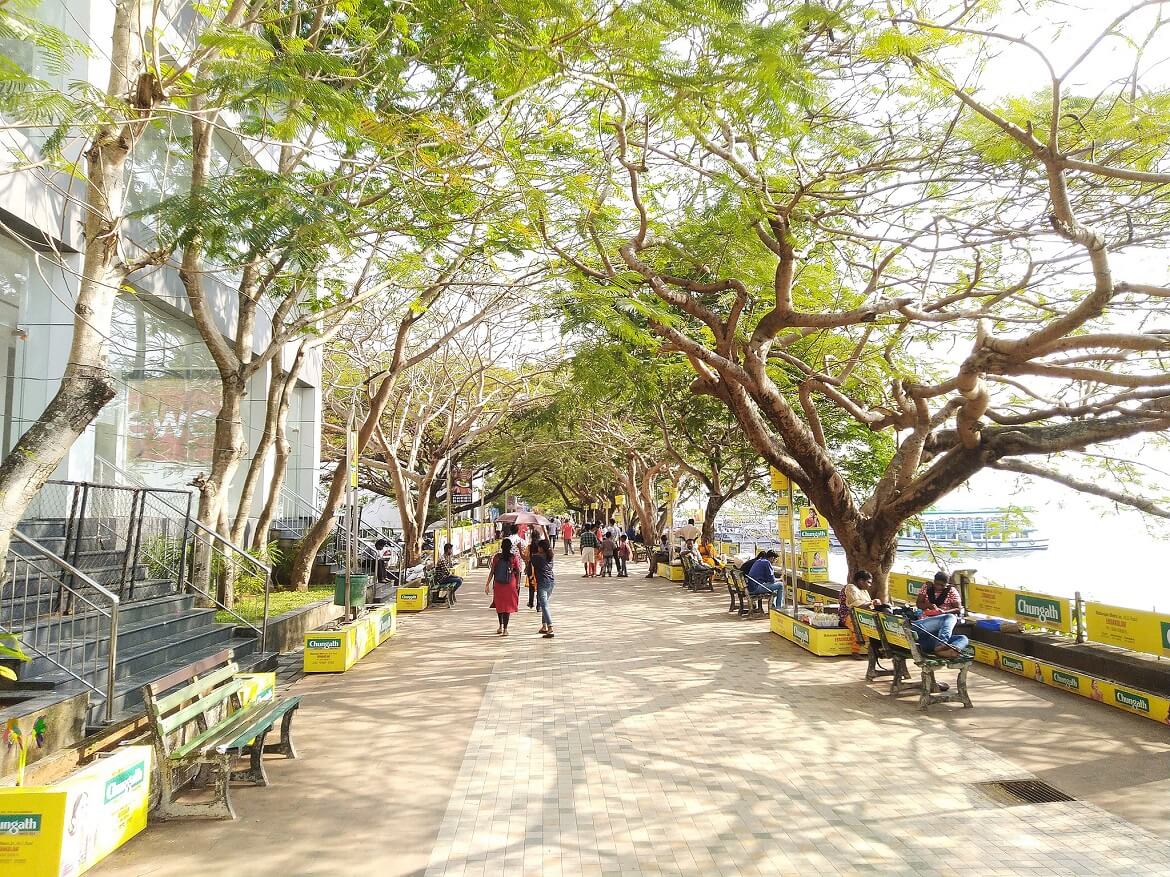Moving from City-Wide Vulnerability Assessments to Localised Community Resilience Actions

This blog was first published on NIUA.org on September 29, 2021.
Cities around the world are experiencing flooding, heatwaves and other climate-related disasters. The frequency and intensity of these disasters have amplified over the last few decades resulting in increased inequalities among communities. Ensuring equitable climate action will help support liveable neighbourhoods for people across demographic groups.
Climate action in urban areas is increasingly becoming important in structuring policies and regulations for disaster mitigation and overall governance. Climate action as an approach necessitates connecting the realities of urban water and heat stress with hydrology cycles, watersheds and catchments, cross-cutting urban issues, such as land use, equity, service provisioning infrastructure development, finance, and governance.
Through the Cities4Forests initiative in Kochi, WRI India is supporting the Kochi Municipal Corporation (KMC) to build localised climate resilience. In doing so, WRI India looks towards three key elements that can help negotiate climate action:
Decision making: arising from rigorous data-driven assessments
Estimates from satellite data reflect that approximately 31% of the city's population is exposed to temperatures above 30 degrees Celsius and about 26% of the city's population lives within flood plains. The 2018 floods in Kochi stand as testimony to the heavily built-up flood plains and neglected water bodies in the city. The need for government intervention for building disaster-resilient public infrastructure is very strong across vulnerable communities in Kochi. The dual benefits of the water system that ensure increased resilience and boost the economy by providing an improved transport infrastructure need to be considered. A complete vulnerability assessment for the city can help identify areas most exposed to climate risks, areas most sensitive due to socio-economic challenges and underserved areas of the city where impacts of climate risks are more amplified. While climate-resilient public infrastructure is critical to help build stronger adaptative capacities at a city level, a closer look at community resilience capacities can help address localized challenges.
Inclusivity: looking at realities on the ground
In collaboration with the Centre for Socio-Economic and Environmental Studies (CSES) and the Center for Heritage and Environmental Development (CHED) we administered 500 household surveys across four vulnerable neighbourhoods in Kochi using WRI India’s UCRA (Urban Community Resilience Assessments) tool. The results showed that vulnerable communities are not involved in sabha meetings or any community engagements, which results in their concerns not being addressed during the decision-making process. On average, more than 50% of all vulnerable communities surveyed suggested that improvements from the government are needed in terms of health, sanitation, flood prevention infrastructure and other general infrastructure. 60% of the population takes water from public wells and does not have access to water connections, which needs to be addressed as it is a major challenge during the flooding seasons. Understanding differential resilience capacities across the four communities, and across the city can help adapt city level assessments and policy institutions for targeted impact at the local level.
Transformative action: for continued results
WRI India and KMC are engaging with local community-based organisations (for example, Kudumbashree), local institutions and citizens in promoting NBS at the neighbourhood as well as the city level. This engagement has enabled the identification of approximately 20 hectares of potential land for restoration in Kochi along with 10 educational campuses in which different typologies of planting interventions will be demonstrated. The goal is to influence the city to look at NBS as a long-term strategy towards climate-proofing against heat risks, floods, storm surges etc., and to build capacities in the state and community-based institutions to promote and support NBS planning and implementation.
Moving towards localized resilience
Building climate resilience is imperative since climate change impacts have a cascading effect on lives and livelihoods. Inclusive climate action planning can advance development outcomes in cities. Further, cities must ensure that climate action does not further burden vulnerable residents due to increase in the cost of living and services.
Cities can take the following measures to enhance climate resilience at the city and local level:
- Embed NBS in policies that address climate change: The multitude of benefits that NBS provides from cooling, abating pollution to moderating the overall effects of climate change is well established. Ensuring NBS is integrated into the city’s development plan, infrastructure projects and community-driven initiatives at the local level can enable transformative actions to mitigate the risks of climate change and help residents adapt to the impacts.
- Encourage data-driven decision-making and information sharing approaches among stakeholders: Cross-learning and sharing information is key to efficient planning. Stakeholders involved in the resilience planning process should advocate a strong willingness to share and learn so we can take inclusive and informed decisions.
- Enable higher community participation for inclusiveness, ownership, and long-term resilience-building: Community participation is key to building long-term resilience. This is, in part, due to the capacities that are built (or leveraged) because of co-designing solutions and the sense of ownership that creates. For this, individual efforts and community practices should be acknowledged, appreciated, and furthered.
Views are personal.
